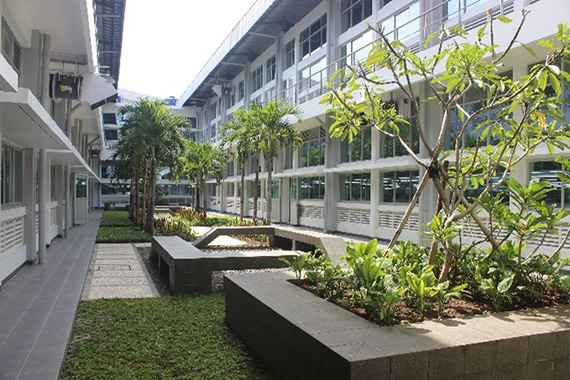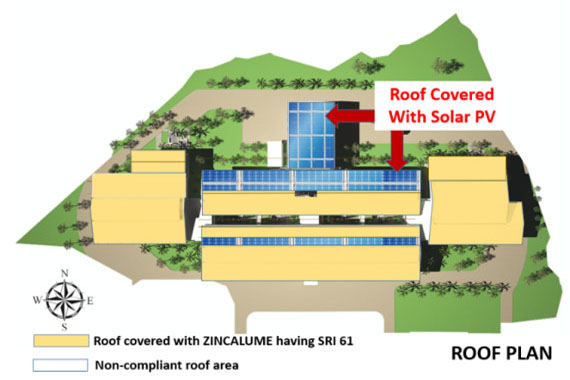Pringapus 6&7, PT-Ungaran Sari Garments (PA6&7)
Semarang, Indonesia
Summary
| Location | Semarang, Indonesia |
| Coordinates | 7°S, 110°N |
| Occupancy Type | Manufacturing |
| Typology | New Construction |
| Climate Type | Tropical Monsoon |
| Project Area | 17,425 m2 |
| Date of Completion | 2018 |
| Grid Connectivity | Grid-connected |
| EPI | 103 kWh/m2/yr |
| Architect | NC Design & Associates, Bali |
| MEP & Architect of record | PT Cipta Prima Sejahtera, Java Tengah, Indonesia |
| Energy Consultants | EDS Pvt Ltd |
Pringapus 6&7 (also called PA6&7) is a readymade garment manufacturing facility located near Semarang in Central Java province of Indonesia. The facility is part of an existing campus of PT Ungaran Sari Garments with five operational manufacturing facilities (PA1 – PA5), and a canteen. This is the first facility of the company in Indonesia which is designed to meet global environmental sustainability benchmarks. PA6&7 is spread over two floors with identical functional arrangement for garment manufacturing.
PTU Sari Garments 6&7 facility is the world’s highest-scoring LEED NC v2009 project, under the Industrial Manufacturing space type. It is also the 3rd highest scoring LEED project worldwide, under LEED New Construction v2009 category. The facility has achieved an energy cost savings of 51% compared to the ASHRAE 90.1.2007 base case comparison. The building is expected to perform 49% better than a conventional factory building in the region. The project has 200KWp roof top solar system which offsets 15% of total energy cost of the project.
The building is designed to be naturally ventilated with provisions for cross ventilation in the north-south façade that helps achieve thermal comfort conditions. The building has an optimal orientation and effective vertical fenestration to reduce direct solar heat gain while allowing maximum diffused daylight into the interiors. An efficient combination of ambient and task lighting has helped the project reduce light power density drastically leading to significant energy savings. The project deploys state-of-the-art efficient manufacturing equipment which further reduces the internal loads and energy use.




